How to sew a sundress for a girl with your own hands?

Every loving mother tries to dress her daughter as beautifully as possible. Along with the richest selection of children's clothing, I want the thing to be exclusive, special. And if sewing a children's dress requires some skills and complex patterns, sewing a sundress for a girl with your own hands is an activity that any mother can do. The main thing is to have a sewing machine at hand.



General recommendations
Sometimes the presence of a pattern is an obstacle to sewing. In fact, sewing patterns make the job much easier. Unfortunately, it is impossible to find the perfect patterns for children, as children are individual and grow quickly. But to create the necessary pattern in a minimum of time is a completely feasible task. And often the "home" pattern sits better than the one offered in needlework magazines.
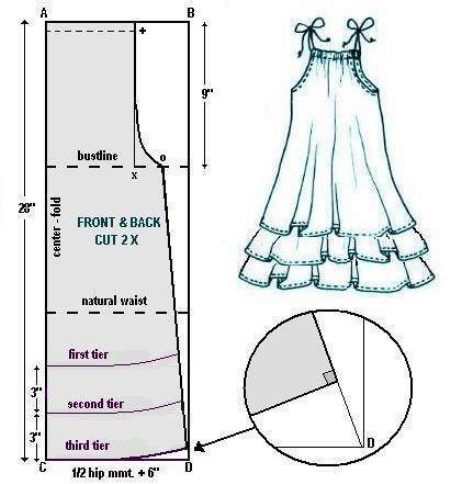
To make your work easier, you need to take on board a few simple tips:
- the pattern does not imply seam allowances: they are added during the cut;
- so that there are no overlaps of material when assembling the product, notches are made during cutting: an allowance of 0.5 cm is incised at the level of the waist, hips and hem, folding the side sections of the back and shelves together, aligning their edges;
- simple products without fitting on the figure can be "swept" with the machine stitch "wide step" 4 mm;
- if there is a typical pattern for the desired age, you can cut out a sundress according to it, and then adjust it to the figure;
- it is not recommended to make a sundress with a snug fit: the skin must "breathe";
- it is better to choose natural textiles, one that does not slip;
- it is undesirable to sew a model for a girl from bielastic fabric (stretching along and across): such textiles require special production equipment;
- we must not forget about the WTO: skipping the ironing of processing units always affects the sewing time and the final result;
- if an elastic band is used in the work (linen, elastic thread), it is unacceptable to iron it, from this it will stretch;
- for perfect alignment of seams, you need to use sewing pins;
- if the seam is obtained with an "accordion", it will not be ironed out, such a defect must be redone immediately;
- To evenly sew the bottom, you can first iron the allowance: this will eliminate the twisting of the fabric.
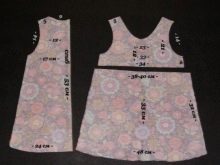
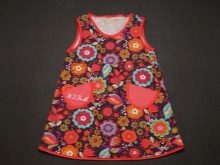
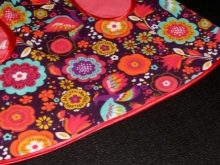
Besides:
- The work can be facilitated if you use a comfortable T-shirt as a pattern for the girl. This will reduce the time for cutting and eliminate the need to build a pattern. In some cases, you can make a pattern directly on the fabric, taking into account the girth of the hips, chest and the length of the product.
- If you need to make changes when trying on, you can measure the future sundress on the wrong side. This method is good if the cut is symmetrical. It allows you to see better fit imperfections.
- In order not to buy extra fabric, you can first prepare a template, then make an approximate layout of patterns taking into account the width of the material you like. It is worth adding about 5 cm to the approximate layout.
- Another little trick: for a sundress to look like it was from a store, the width of the finishing seams of the parts must be identical. In addition, it is worth considering the secret of professionals: if the print allows it, it should be symmetrical, matching the side seams (strip, cage).
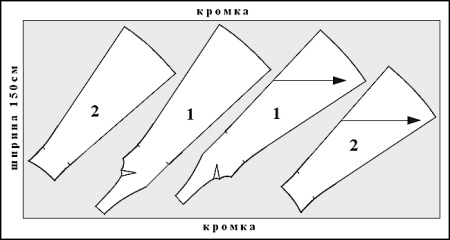
Simple model for a girl for 1 year
A light summer sundress with a minimum of details is a great option for beginners. It will take a minimum of time to sew it, it does not need additional decor. This is a beautiful model in which the girl will be comfortable.

The pattern is based on a trapezoid with the size of the upper edge of 8 cm, the lower one - 22 cm, in length - 21 cm. All that needs to be modified in the trapezoid to form the armholes is to step back 6 cm from the sides and smoothly bring the lines to the lateral edges of the trapezoid.
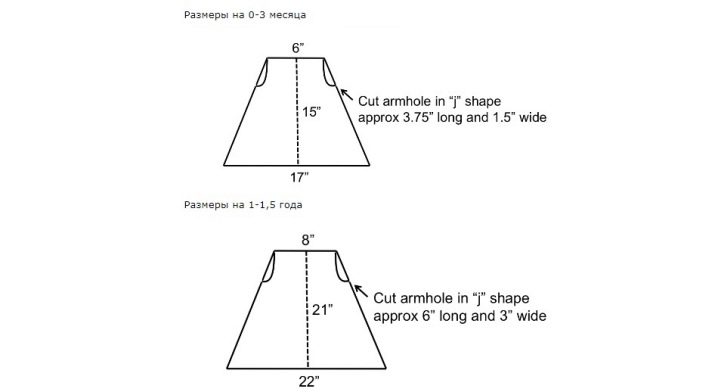
Having cut out 2 parts of the base, they are folded face to face, then the side cuts are grinded and processed on a typewriter. Having ironed the bottom allowance, the finishing tape is pinned to it. It is sewn on, the edge is overcast, then folded so that the braid is visible, and a finishing line is laid.

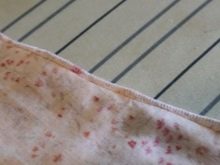

Armholes can be finished with bias tape. So that in finished form they do not look stretched, during processing you need to slightly pull the bias tape and make a barely noticeable wave of textiles. For convenience, it is better to use sewing pins. It turns out a wide edging on the seamy side.
Nuance: a slanting binding may seem capricious to a beginner. To make a sundress sewn pleasant emotions, and not have to fiddle with the inlay, you can change the processing of the edge of the armholes. To do this, you must first iron the finished bias tape by folding it in half. Sewing it on in one line is much easier by putting the edge of the armhole inside.
Now it remains to wrap the upper cut of the sundress, stitch it and thread the satin ribbon. A fashionable new thing for your daughter is ready!
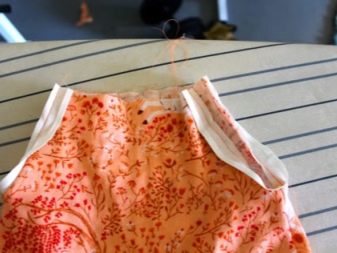
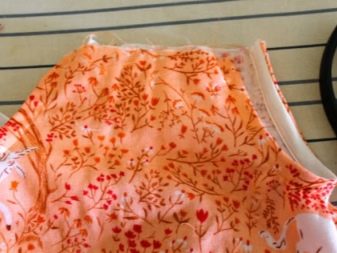
Summer model for 2-4 years: master class for beginners
A mother who has an hour of free time can sew a cute sundress with straps for her daughter. Even a beginner can cope with the sewing of such a model. In addition, the measurements for the pattern are also minimal: you need the parameters of the chest girth and the desired length.
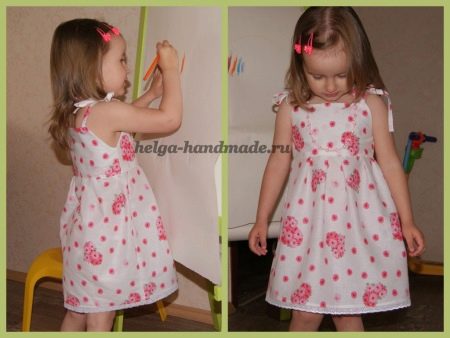
Cut details
The pattern is designed for a 2-year-old girl. Having measured the girth of the chest, a small allowance for the freedom of fitting is added to it, then the result is divided by 2. The length of the bodice depends on preferences. The approximate figure is 30 cm.
The top of the sundress will be double. Cut from the fabric:
- 4 rectangles 16 x 30 cm (bodice), then the upper corners are beveled in a straight line by 5 - 7 cm, forming armholes.
- For the skirt, cut 2 rectangles measuring 33 x 50.
- The straps are cut out 3 cm wide, the length depends on the particular child.
When cutting, it is worth considering a small nuance: without allowance for a free fit, putting on a sundress can cause difficulties.
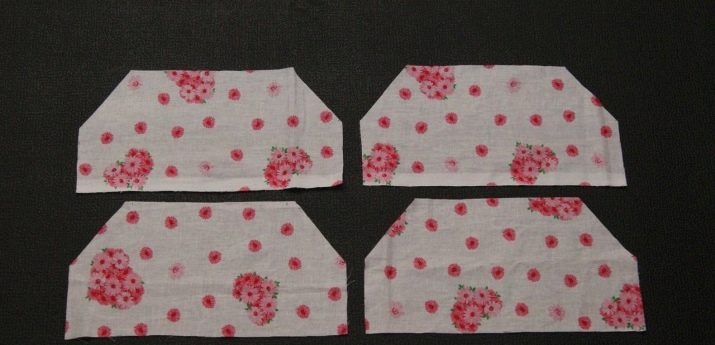
Sewing technology
It's pretty simple:
- first, the straps are prepared by sewing them on a typewriter;
- the details of the bodice are connected in pairs with the front sides inward;
- having outlined the correct position of the straps (at the uppermost corner of the armholes), they are inserted between the paired details of the bodice;
- the blanks of the top are stitched on three sides, without touching the lower cut, then turned out onto the front side and ironed;
- the details of the skirt are folded with the front sides inward, grind on the sides and process the seams on the overlock;
- a narrow lace ribbon is sewn to the bottom edge, then the allowance is overcast and secured with a finishing line.
- by combining the skirt with the side seams, they find the centers of the shelf and back;
- folds are laid from the centers of the skirt, symmetrically distributing them on both sides (for convenience, it is better to chop off the centers of the parts and the side seams of the top and bottom);
- the skirt is connected to the bodice, the edge is overcast (if desired, you can wrap the allowance on the side of the bodice and fix it with a line).
The straps are tied when putting on the product. If the model seems rustic, you can decorate it with a small flower along the line of the bodice and skirt joining.

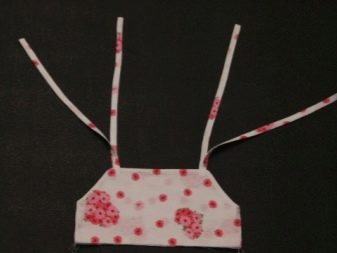
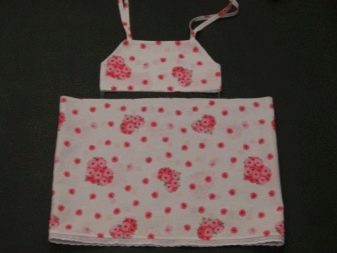
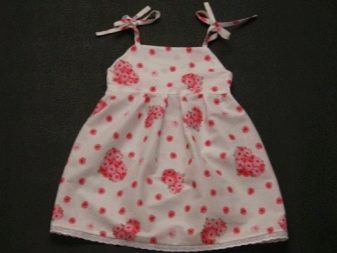
Dress-sundress with a flounce at the neck for 5-7 years
This model is very simple to implement. It will take no more than an hour to create it. In order not to be smart with the pattern, you can create a template according to the sample. The photo shows a pattern for a 5-year-old girl (height 110 cm).
For those who find it difficult to figure out how to build a pattern, a small instruction will help:
- on a large sheet (newspaper or the remnants of wallpaper), draw a rectangle measuring 27.5 x 60 cm (half of the pattern with a fold);
- 15 cm recede from the middle of the upper line and point A is set;
- from the resulting point A, they retreat downward about 15 cm and draw a perpendicular line connecting the two sides of the rectangle (this is the armhole line);
- then draw up the side, as in the photo: 22.5 cm recede from the middle of the second line (the level of the armhole) and point B is put, then points A and B are connected;
- 3 - 3.5 cm recede from the side line of the bottom and point C is set, then it is connected to point B;
- the bottom line should be rounded: point C is smoothly connected to the middle of the bottom;
- at the shelf, the neckline is slightly larger, so the neckline of the shelf should be 1 - 1.5 cm lower.
Before cutting out the base, you need to steam the fabric with an iron: this will save the finished product from deformation and shrinkage after washing. Having cut out the details of the base, you need to cut out a strip of 130 x 18 cm (shuttlecock).
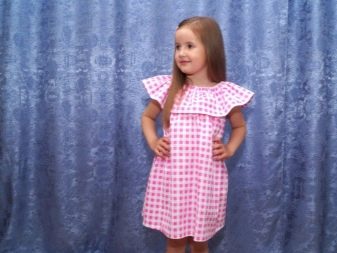
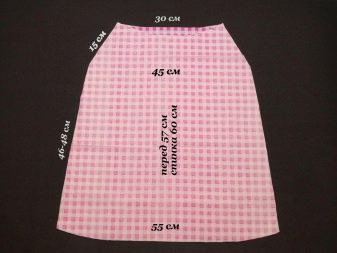
Sewing a sundress is simple:
- the product is put on the seamy side, the armholes are folded and stitched with a seam in a hem with a closed edge;
- after the armholes, the side cuts are grinded and processed on the overlock;
- the bottom of the product is tucked 2 cm, folded 0.7 cm and stitched on a typewriter;
- the sides of the shuttlecock are grinded, swept over, and then tucked in the bottom and stitched with a hem seam with a closed edge;
- having outlined 2 midpoints of the shuttlecock, 1 shelf, 1 back, they are combined with sewing pins (the shuttlecock rings the top with the front side on the face):
- the shuttlecock is grinded to the base.
- the upper side of the shuttle is tucked up to the width of the elastic, stitched on a typewriter, then the elastic is threaded (approximately 45 - 49 cm long).

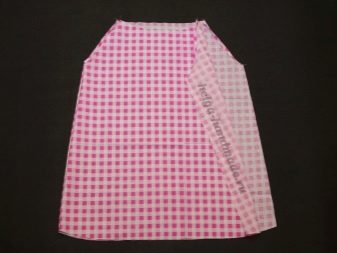
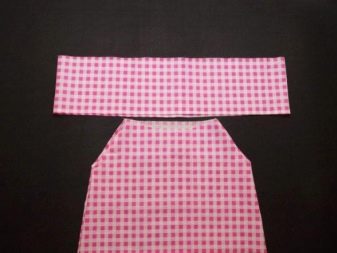
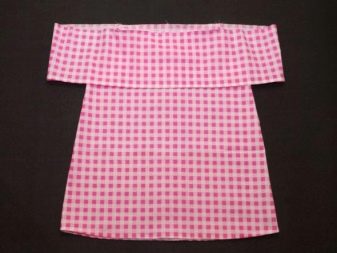
If the girl is older, the size of the pattern is increased. The length of the finished sundress is small (you need to take this into account before cutting). If you want an accent, you can complement the sundress with a narrow contrasting belt.
New look style for 8-10 years
A charming children's sundress with a fluffy skirt and a bow will appeal to any girl. Sewing will not take much time: its complexity is minimized. First, you need to measure the hip circumference, the distance to the waist line and the estimated length of the model. A gathering allowance is added to the measurement of the hip girth, so that the bodice and skirt seem lush.
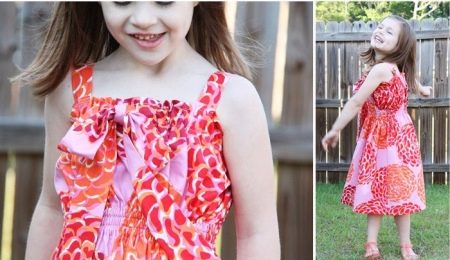
Sewing the model is as follows:
- Having cut out two rectangles, taking into account the allowances, they are grinded on the sides, the edges are overcast.
- The upper edge is wrapped, forming a drawstring, after which two loops are made in front for threading a bow. In order for them to be reliable and not to tear the fabric, at the place of their execution, the fabric must be reinforced with an adhesive pad. It is important to consider that the width of the drawstring should cover the hinges.
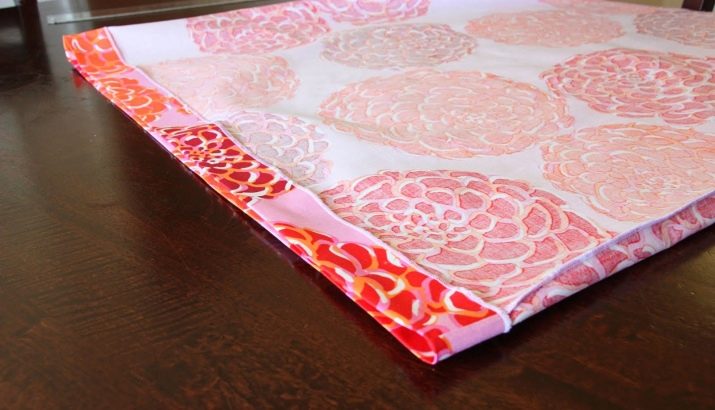
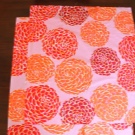
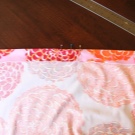
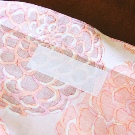


- The drawstring at the waist is secured with two lines: along the top and bottom edges. It is advisable to select the threads for stitching in the tone of the fabric, so the product will look neater. When sewing, it is best to focus on the marks to the right of the presser foot located on the metal plate of the machine. This will keep the stitching straight and parallel. If you don't want to mess with the drawstrings, you need to iron their allowances. This will allow the stitching to be laid flat and without preliminary counting. To prevent the stitching line from moving, it will be enough to secure it in several places with sewing pins.
- Having outlined the waistline (you can attach the product to the figure with the wrong side), sew the drawstring, leaving a place for threading the elastic bands (the width of the stitching seam is 0.1 cm). The drawstring around the waist should be in one piece, including over the side seams. Dividing the width of the part into three parts, lay two more lines for the elastic bands, also leaving a small gap for threading.
- Having measured out the elastic bands of the required size, they are threaded and connected into rings. Distribute the gathering evenly around the waist.
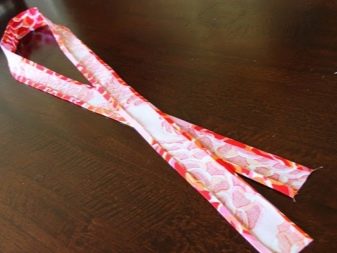
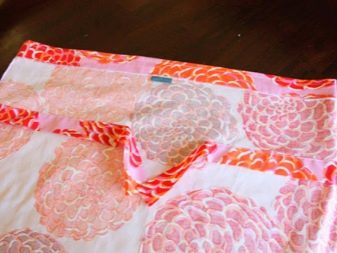
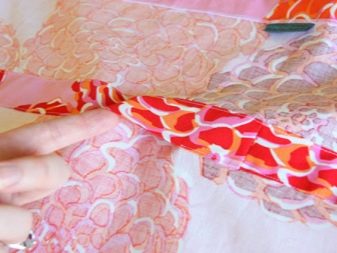
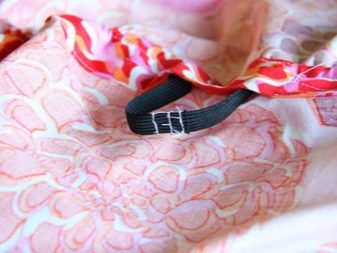
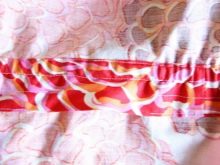
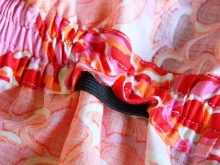
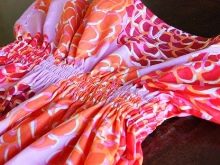
- After designing the waist, you need to complete the work with the top of the sundress. To do this, take a satin ribbon and thread it into the loops, then cut off the excess length and carefully singe the ends of the ribbon. It remains to collect the straps and sew them to the top, without going over the upper border of the stitch.
The model is convenient because it allows you to change the width of the top for ease of putting on. Such a sundress looks stylish and beautiful.
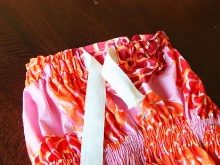
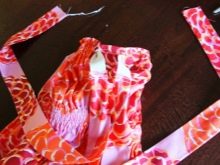
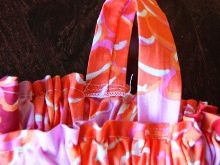
Patterns of models for teenage girls
It is a little more difficult for teenagers to choose a pattern. The thing is that the figure is just beginning to form, and each girl has her own way. However, even here you can simplify the task of sewing: when choosing templates for a cut, you need to start from four measurements: chest girth, hips, waist and height.
They all matter. Even with the observance of the first three, but not taking into account the girl's height, it is possible to complicate the sewing process, because a lot depends on the height when calculating and building.
If the model is simple, for example, flared or trapezoidal, you may need only the size of the hip girth. In this case, the type of pattern will be a rectangle, which will turn into a fitted model with the help of an elastic thread. Moreover, it is very quick and easy to make such a sundress: by connecting the side seams, processing the bottom and top, you need to arrange the bodice with parallel lines with a distance of 1 cm (from the top to the waist line).

Another option is a pattern in the form of a trapezoid, combined with a square at the base. The bottom of the pattern is rounded, the top is a straight line. To build, you need to measure the girth of the chest, hips and length. Allowances for freedom of fit must be added to the measurements. Having made a template, cut out the base of the sundress and straps (two strips of fabric along the length).
Having connected the side cuts and sweeping them, they process the bottom of the product, and then proceed to the bodice. First, the armholes are tucked in and stitched, and then the top is folded (separately the backs and shelves) and covered with it. It remains to collect the straps, thread the top of the back and shelves into the received channels, tying it in a knot.

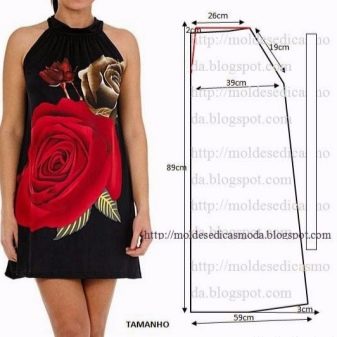
If you have a comfortable T-shirt, you can cut out a sundress with it. To do this, the product is placed on the fabric, the neck and armholes are outlined with a pencil, and then a flare line is drawn. Such a sundress will be light and comfortable, and, moreover, fashionable. The only difficulty in sewing is processing the neckline and armholes with single edging. Beika will simplify the look.
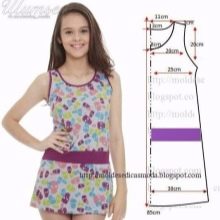
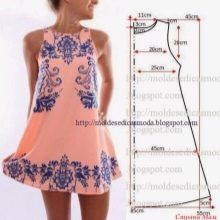
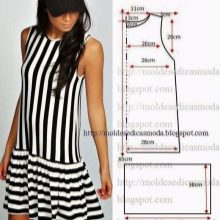
DIY school sundress
When a girl goes to school, I want her to be the best.It's no secret that it is more difficult to choose a uniform: often a school sundress looks baggy, so it often needs to be corrected. For those who are determined for the perfect result, you can sew a sundress for the school yourself. To do this, they take a pattern from magazines or seen on the Internet on forums dedicated to needlework as a basis.
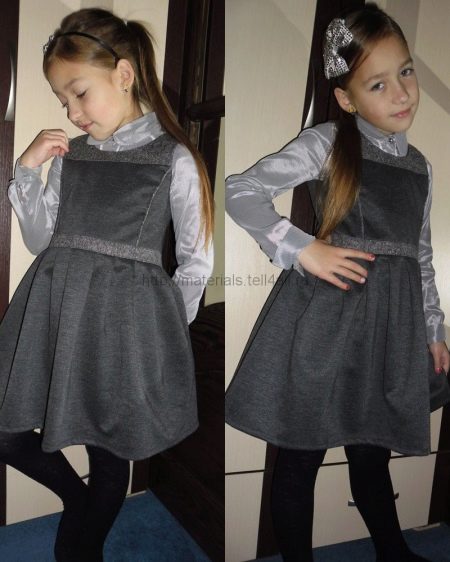
Unfortunately, it is not easy to find a high-quality pattern for a school sundress; its construction is often perplexing. But if you look closely at the templates, there is nothing super complicated in them: you can make them yourself. For example, a skirt is a rectangular sheet of fabric gathered in a fold. The bodice is a T-shirt with reliefs (side parts) extending from the armholes.
If the construction of the pattern is a dark forest, you can take a ready-made template designed for a suitable age. The main task is to print it in the right size. To do this, you need two measurements: the length from the back to the waist (exact) and the half-girth of the waist (taking into account the allowance for freedom of fit).
Having opened a Microsoft Word document, you need to insert a picture of the pattern into it and increase it to the desired size, measuring the parameters on the screen with a measuring tape. If the girl's figure is slightly different, you can slightly adjust the height. Since the template will not fit on the page, it is spread over several pages, then printed and glued, aligning the edges.
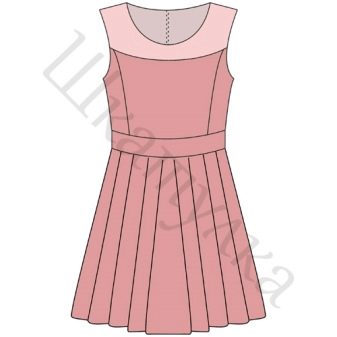
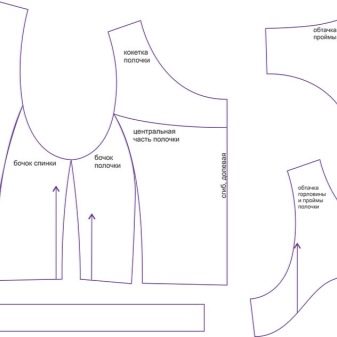
The trims are cut out, focusing on the details of the base: they repeat the shape of the neckline, armholes, connect along the shoulder and side seam. Before cutting out the trims, it is better to glue the fabric with non-woven fabric. So they do not deform, in contrast to the method when they cut out the trims and glue separately, and then join them.
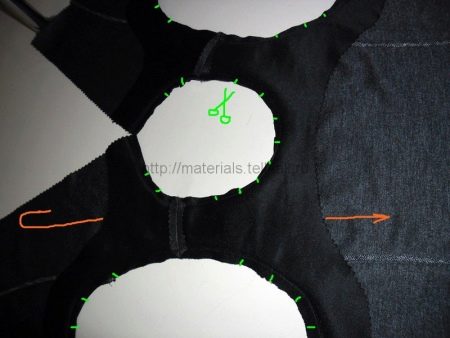
The sewing technology is as follows:
- Having cut out all the details of the cut (shelf, barrels of the shelf, two details of the back, barrels of the back, edging), they are assembled with a temporary stitch. The right fit to avoid rework. In order not to stretch the neckline, you can sweep piping to it.
- After trying on, the embossed sidewalls and side cuts are grinded. The edges are overcast (if the fabric is thick, the side seams are overcast separately, so that they are then ironed out and not create excess thickness when connected to the facing). The seams of the reliefs are ironed to the center (shelves or backs).
- Having covered the folds (observing the symmetry from the center of the shelf), they are ironed from the seamy side, then the skirt is stitched to the top. The allowance is swept over and ironed up.
- Each middle section of the back is overcast, then a secret zipper is sewn in (each side separately) using a special presser foot. Then the middle seam is sewn.
- This product is somewhat different from simple sundresses, so you cannot do without rigging: the bodice is folded, combining the side seams, free shoulder cuts and armholes (temporary stitches are removed). Having specified the symmetry, the shoulder seams are grinded.
- The piping is overcast along the bottom edge, facing the front side of the sundress, and then grinded. Then it is turned inside out and ironed, fixing the shape of the neck. This style does not need finishing lines, as they will simplify it.
- The last step in nodal processing is the bottom edge. It is overcast, tucked in and stitched. The bottom cannot do without a sturdy stitching: it is more reliable than blind stitches. At the end of the work, the sundress is ironed, not forgetting about the folds at the bottom.
The textiles used for sewing school clothes are very picky about delicate ironing. WTO is performed only from the seamy side and through a thin calico fabric (or gauze). If you iron the product on the fabric, it will leave weasels on it.
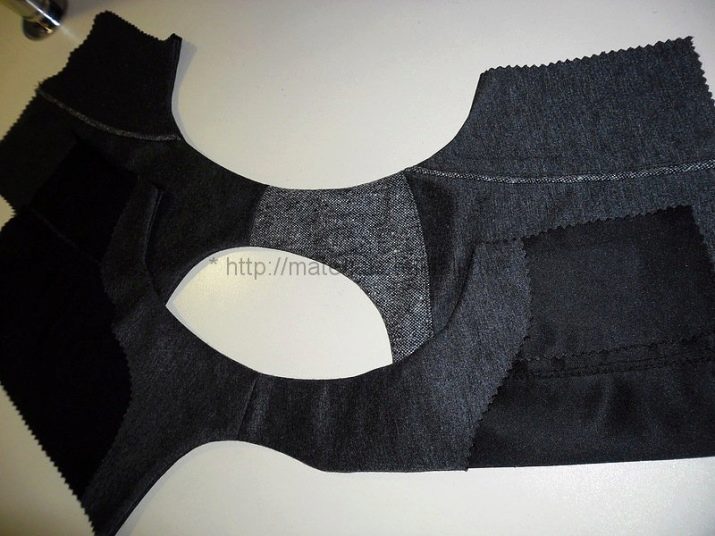
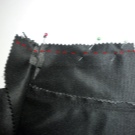
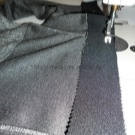
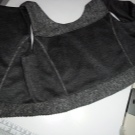
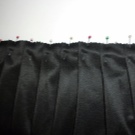
How you can sew a beautiful sundress without a pattern, see the next video.




